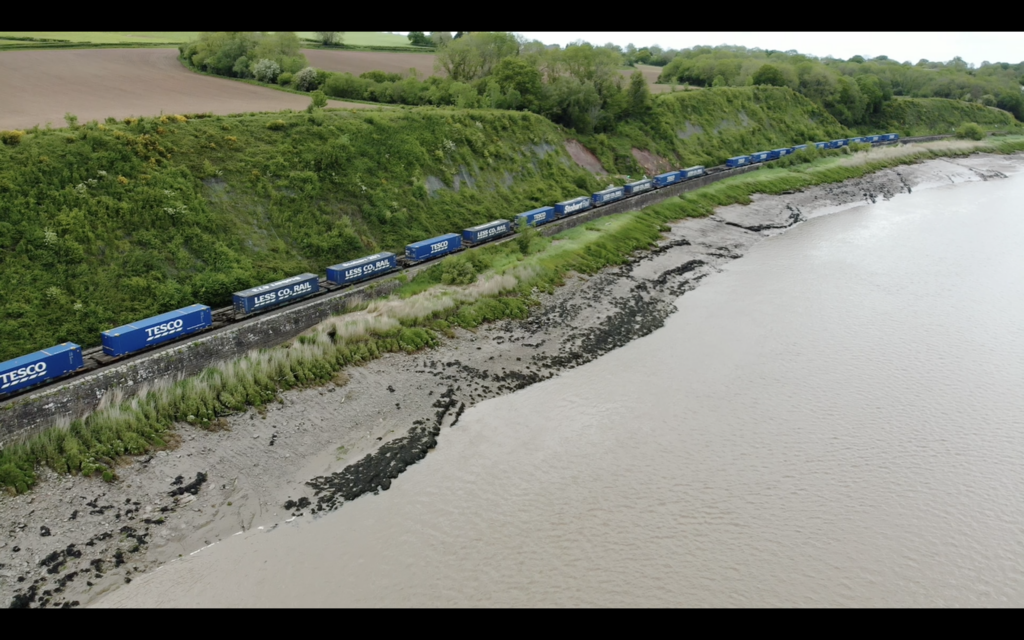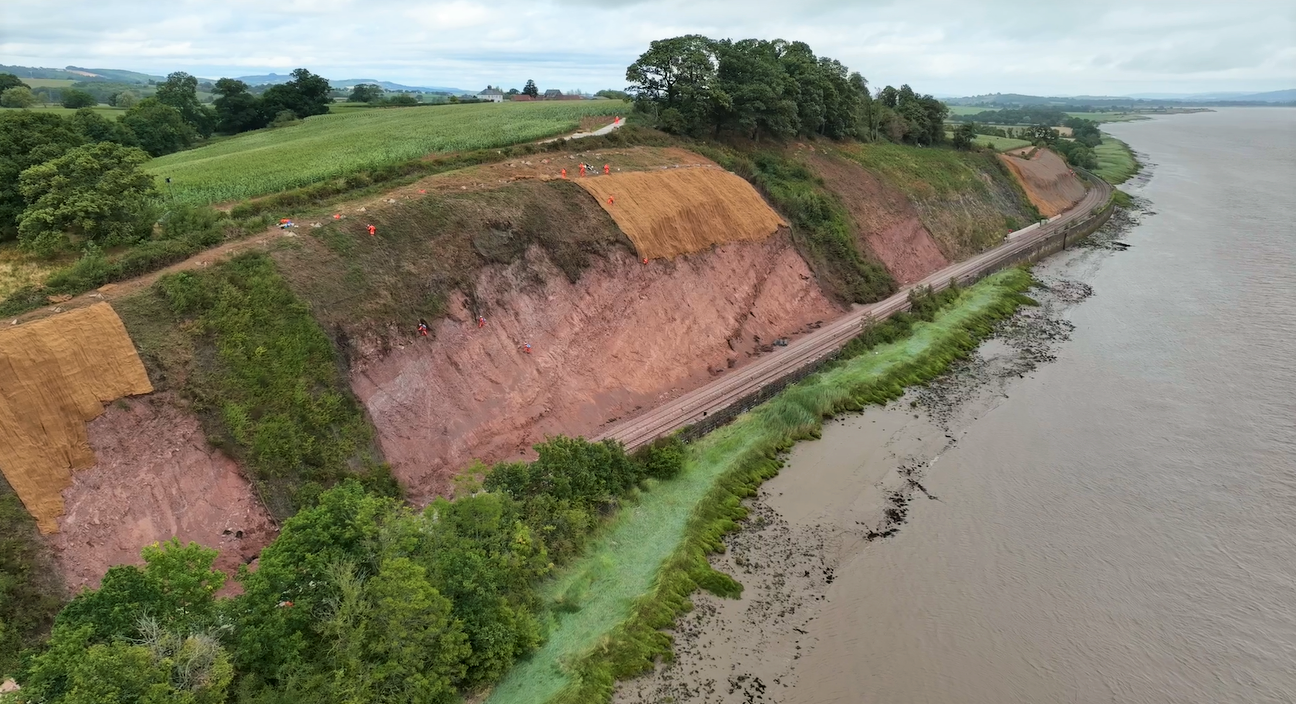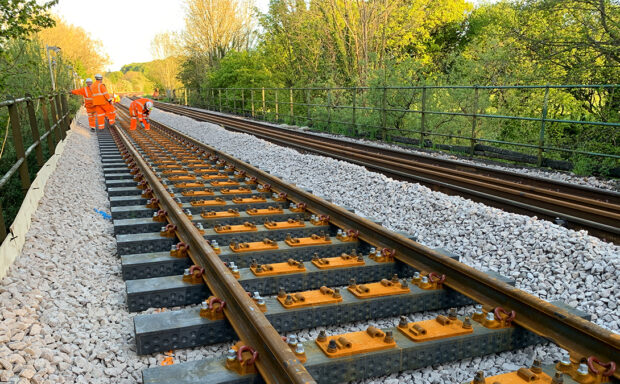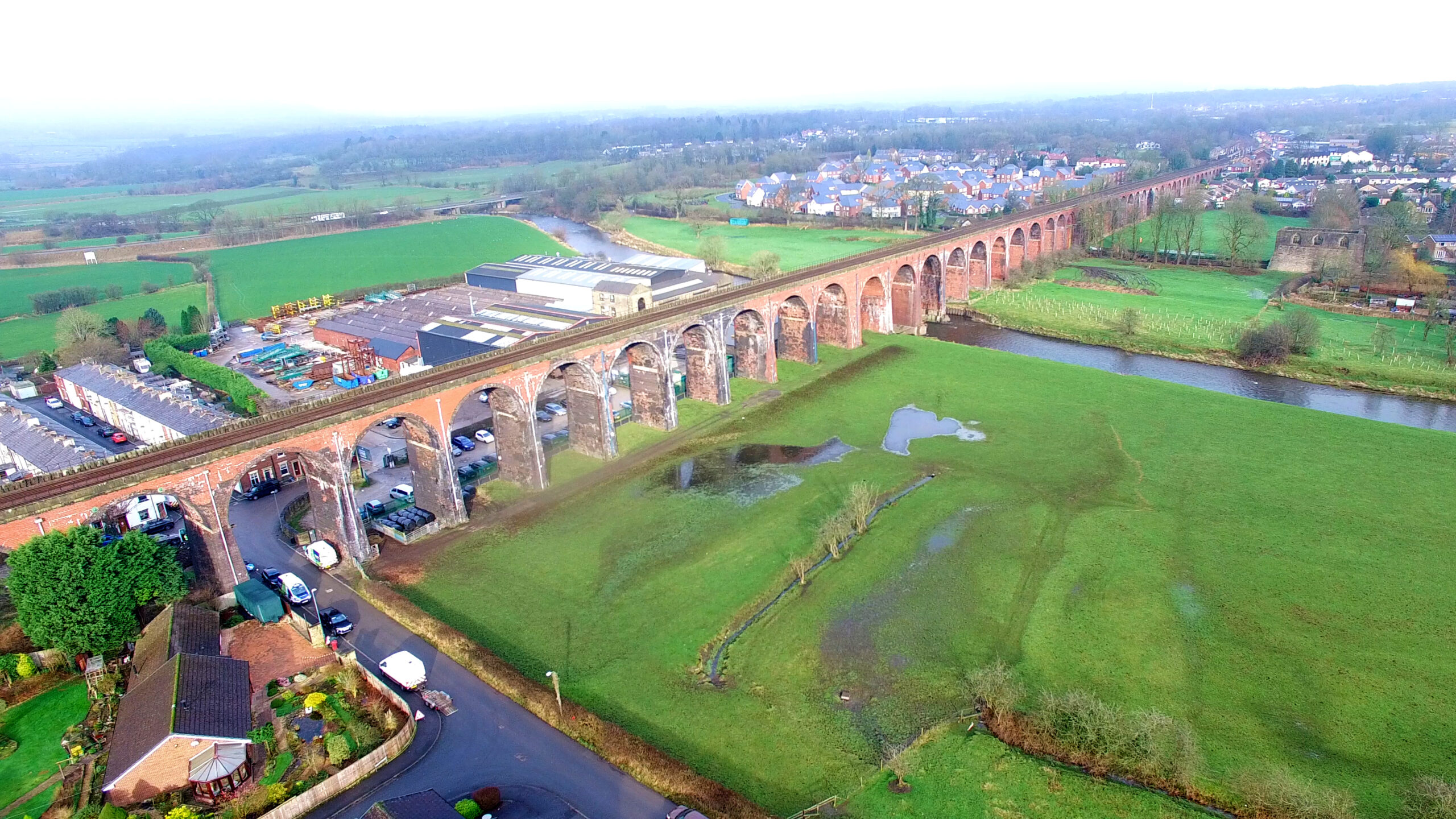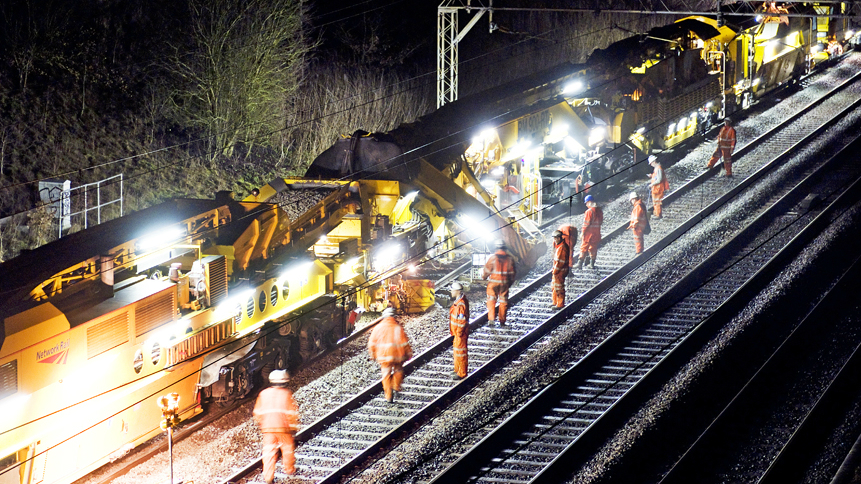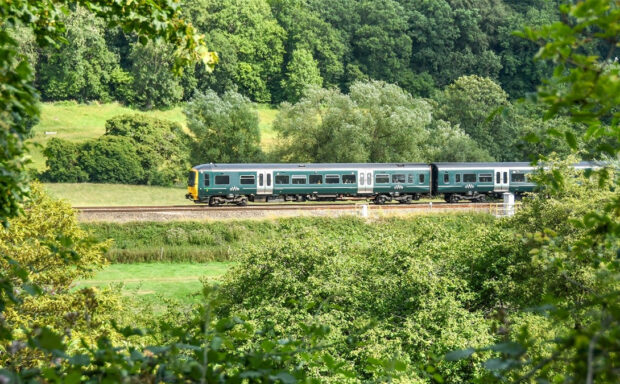We’re innovating the way we manage our cliffside track to combat extreme weather events and make the railway safer.
Extreme weather can cause a wide array of issues for the railway. Landslips are considered one of the most dangerous of these issues. Not only can a landslip have the potential to cause a derailment, but they can also cause huge disruptions and prevent you from getting to where you need to go.
Our teams are preventing this by working high above the tracks between Lydney and Gloucester, on the Severn Estuary Resilience Programme.
We’ve had to close the Severn Estuary Line and impose many speed restrictions due to five landslips between 2020 and 2021. The damage to the line has delayed more than 200,000 trains.
But now, our skilled engineers are making this line more resilient to landslips by installing a bespoke innovative rock mesh, or netting, system.
Our protective systems
We use two types of rock mesh systems to help prevent debris from cliffs or embankments falling onto the track: passive and active.
Our passive system consists of rolls of matted and metallic mesh that we drop from the top of the cliff face and bolt on. We drill these bolts in at the top, middle and bottom of the cliff face. This system catches any falling debris and prevents it from disturbing the track below.
Our active system uses the same matted and metallic mesh but many more rock bolts drilled into the cliff face. The added bolts enable the mesh to hold the cliff face in place and prevent any material coming away.
We had to remove 15,000 tonnes of material from the cliff face to reduce the angle of its slope before we could install these systems.
We support the systems with motion sensors and CCTV cameras at the most high-risk sections of railway. The motion sensors will alert us of any movement in the cliff face. Our CCTV cameras will enable us to remotely examine and determine the extent of any movement.
Our plan
We’ve finished the main bulk of phase one by installing our passive mesh system onto the face. More than 700 of our engineers and contractors, Taziker, have worked more than 60,000 hours across the seven weeks of phase one.
We’ll start installing the active system in phase two of this project next summer.
Our teams will continue to install more than 1,000 rock bolts and 27,000 square metres of mesh to the cliff face along a three-mile section of railway.
This is challenging work. Our engineers have to work up to 50 metres above the tracks on ropes to install the mesh system. We’ve also been working through the hottest summer on record and are continuing to work up to November – albeit with smaller teams.
The Severn Estuary Line
You may be wondering why we’re investing a huge amount to protect this section of railway; this is a vital piece of railway.
The Severn Estuary Line connects South Wales to the Midlands and the line is an important diversionary route when the Severn Tunnel undergoes maintenance.
It’s also a crucial freight route with 43 freight trains passing along the estuary every week. The services transport steel, petrol and construction materials. Tesco trains use this route as well to keep supermarkets stocked with essential supplies.
